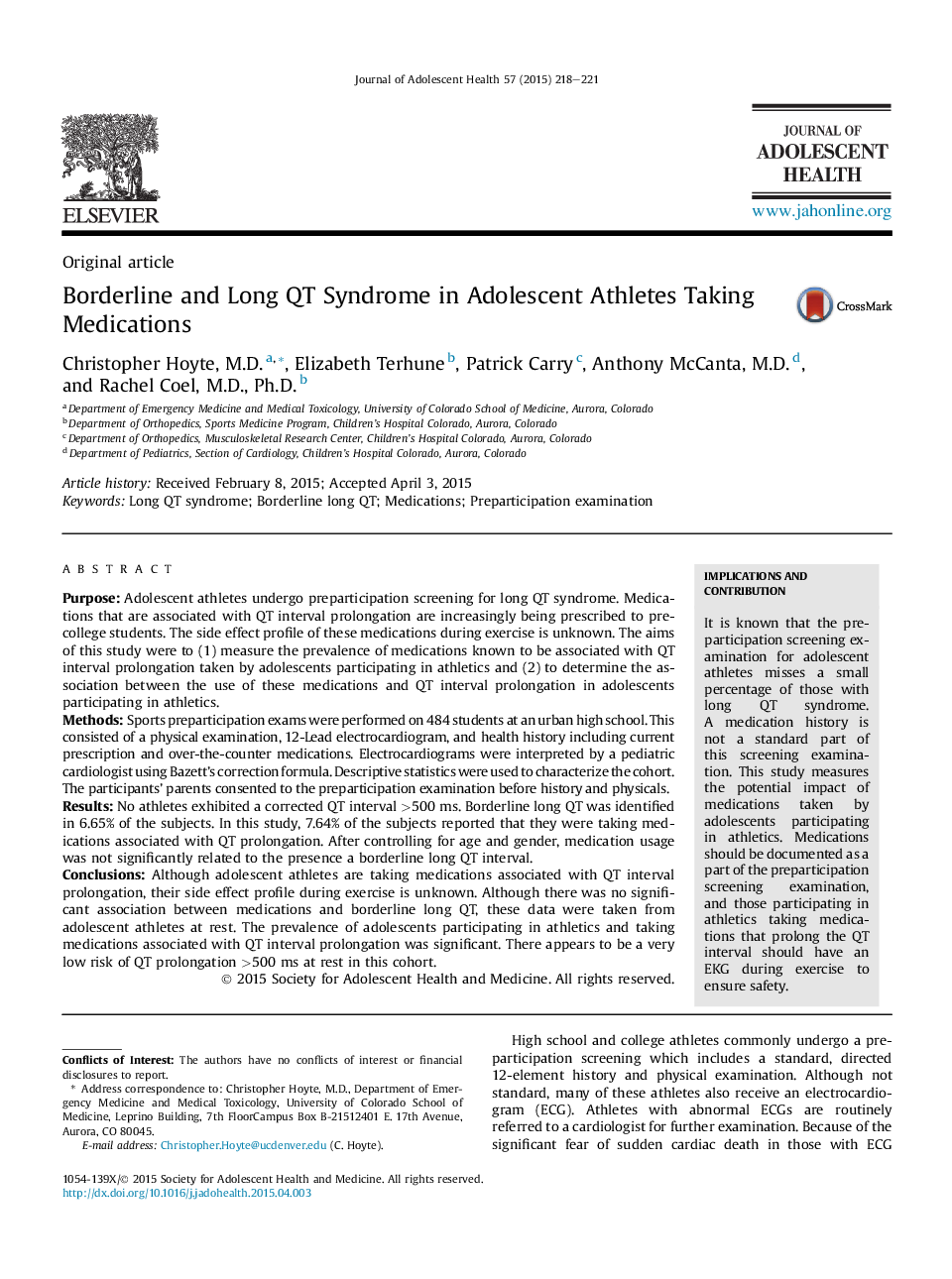| کد مقاله | کد نشریه | سال انتشار | مقاله انگلیسی | نسخه تمام متن |
|---|---|---|---|---|
| 1079232 | 950491 | 2015 | 4 صفحه PDF | دانلود رایگان |
• It is known that the preparticipation screening exam for adolescent athletes misses a small percentage of those with long QT syndrome.
• A medication history is not a standard part of this screening examination.
• This study measures the prevalence of medications associated with QT interval prolongation taken by adolescents participating in athletics.
• We also assessed the risk of having a long QT or borderline long QT on ECG in this cohort.
PurposeAdolescent athletes undergo preparticipation screening for long QT syndrome. Medications that are associated with QT interval prolongation are increasingly being prescribed to precollege students. The side effect profile of these medications during exercise is unknown. The aims of this study were to (1) measure the prevalence of medications known to be associated with QT interval prolongation taken by adolescents participating in athletics and (2) to determine the association between the use of these medications and QT interval prolongation in adolescents participating in athletics.MethodsSports preparticipation exams were performed on 484 students at an urban high school. This consisted of a physical examination, 12-Lead electrocardiogram, and health history including current prescription and over-the-counter medications. Electrocardiograms were interpreted by a pediatric cardiologist using Bazett's correction formula. Descriptive statistics were used to characterize the cohort. The participants' parents consented to the preparticipation examination before history and physicals.ResultsNo athletes exhibited a corrected QT interval >500 ms. Borderline long QT was identified in 6.65% of the subjects. In this study, 7.64% of the subjects reported that they were taking medications associated with QT prolongation. After controlling for age and gender, medication usage was not significantly related to the presence a borderline long QT interval.ConclusionsAlthough adolescent athletes are taking medications associated with QT interval prolongation, their side effect profile during exercise is unknown. Although there was no significant association between medications and borderline long QT, these data were taken from adolescent athletes at rest. The prevalence of adolescents participating in athletics and taking medications associated with QT interval prolongation was significant. There appears to be a very low risk of QT prolongation >500 ms at rest in this cohort.
Journal: Journal of Adolescent Health - Volume 57, Issue 2, August 2015, Pages 218–221
